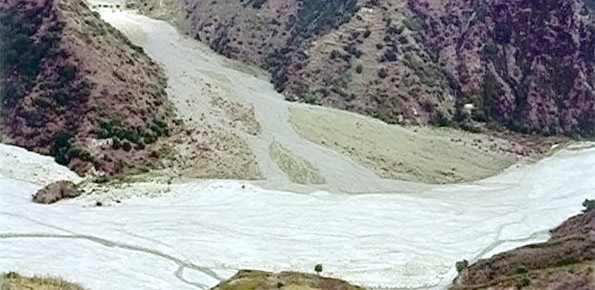Hazard of alluvial fans

Background
In international literature, it is now widely recognized that alluvial fans are areas of high geomorphic activity. Debris flows and flash floods occur episodically in these environments, and place many communities at high risk. Calabria (southern Italy) is a region where alluvial fans widely occur. In this region, the presence of mountain fronts/alluvial and/or coastal plain, or deep and narrow valleys debouching into larger valleys are key factors for alluvial fan development. Dating of Calabria alluvial fans is not frequent; however, there are evidences that the greatest part of them are recent (Holocene) in age. The majority of recent alluvial fans are debris-flow dominated, as they relate to phases of increase in landsliding activity within their feeder basin resulting in higher debris-flow hazard. Moreover, since the early human settlements (VII Century BC) and because of the dramatic increase in urbanization in the last two centuries, several of these fans have been affected by human activities, including agriculture, infrastructures and housing construction.
Purpose
The project aimed to study some procedures for hazard and risk definition within an alluvial fan in Calabria. This issue has become rather topical lately, given the recent reactivation of debris flows on the fan, after a brief period of inactivity. Three case studies have been identified for this purpose: Fuscaldo Marina (CS) fan, the Aiello Calabro (CS) one and that of S. Lorenzo D’Aspromonte (RC). In the first of these three cases, the debris flows occurred until the first half of the twentieth century; instead, in Aiello Calabro’s case, and even more particularly in that of S. Lorenzo the phenomena are quite recent.
Results
The work-team has determined the characteristics of the three sample fans and of the phenomena affecting them on the basis of detailed geomorphological, geological, sedimentary, geophysical and historiographical research and has developed a calculation model to measure the flow runout. Furthermore, for each case study, the team has determined the critical points for the evaluation of risk deriving from hyper-concentrated flows and debris flows within a fan, which consist of data quantity and temporal continuity.
Conclusions
The results obtained show the methodological validity of the study, since it has been demonstrated that the multidisciplinary procedure adopted has the potential for providing the simulation model with satisfying data for its functioning. At the same time, however, the discontinuity and inhomogeneity of pre-existing data prevented us from fully using the results obtained to define the level of risk with a sufficient degree of reliability for the transfer to territorial constraints systems.




 Internal contact person: loredana antronico -
Internal contact person: loredana antronico -